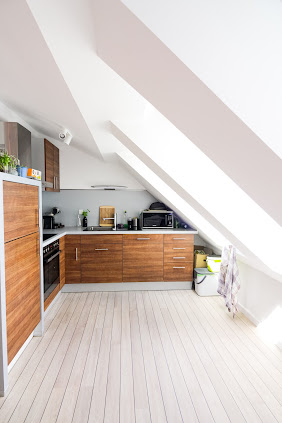Illuminating Choices: Understanding Skylight Costs and Types
Skylights have become a sought-after feature in modern home design, renowned for their ability to infuse natural light into living spaces and enhance the overall ambiance of a home. These features not only brighten rooms but also offer energy efficiency and aesthetic appeal. Understanding the various types of skylights and their associated costs is essential for homeowners considering this valuable enhancement.
The Allure of Skylights
The primary appeal of skylights lies in their ability to transform indoor spaces. By allowing natural light to penetrate directly into rooms, skylights can make spaces feel larger, brighter, and more inviting. This influx of daylight can also reduce the need for artificial lighting during the day, leading to energy savings. Furthermore, the psychological benefits of increased natural light, such as improved mood and productivity, add to the allure of skylights.
Types of Skylights
Several types of skylights cater to different needs and preferences. Fixed skylights, which do not open, are ideal for homeowners who want consistent natural light. Vented skylights, which can be opened either manually or electronically, provide the added benefit of improved ventilation, making them perfect for kitchens or bathrooms where moisture and odors accumulate. Tubular skylights, designed for smaller spaces, use a reflective tube to channel light from the roof to the interior space, offering a compact and efficient lighting solution.
Design Considerations
When choosing a skylight, homeowners must consider several design aspects. The size and placement of the skylight will significantly impact its effectiveness in lighting a room. Larger skylights allow more light but may require structural modifications. The orientation of the skylight on the roof also affects the amount and quality of light received, with south-facing skylights capturing maximum sunlight.
Cost Analysis
The cost of installing a skylight is influenced by various factors, including the type of skylight, its size, and the complexity of the installation. Additional features such as blinds, UV coatings, and remote control operations can also add to the cost. Structural modifications, if required, will further increase expenses. Homeowners should balance the initial investment against the potential energy savings and increased property value that skylights offer.
Energy Efficiency and Sustainability
Modern skylights come with features that enhance energy efficiency. Double-glazed units with low-emissivity coatings and argon gas fillings provide excellent insulation, reducing heat loss in winter and heat gain in summer. Energy-efficient skylights can contribute to lower heating and cooling costs, making them an environmentally friendly and cost-effective choice.
The Long-term Benefits
While the initial cost of installing a skylight may seem substantial, the long-term benefits make it a worthwhile investment. Enhanced natural light can significantly improve the living environment, potentially increasing the home's resale value. The energy savings over time can also offset the initial installation cost.
Skylights represent a valuable addition to any home, offering both functional and aesthetic benefits. By understanding the different types of skylights and considering their costs and benefits, homeowners can make informed decisions that enhance their living spaces and contribute to a greener home. The investment in a skylight can pay dividends in terms of energy savings, improved ambiance, and increased property value.
For more comprehensive information on selecting the right skylight for your home, along with insights on costs and types, visit our website at https://atticplus.com.au/.




Mga Komento
Mag-post ng isang Komento